Ever wondered just how credit cards transactions work? Discover the fascinating technology in your plastic card, and how a swipe or a tap sets off a process which pays your bills, with Cashfloat.


- Learn how many people are involved every time you tap your credit card
- Find out how the magnetic strip on your card can get damaged in magnetic fields
- In the future, smart cards could combine all your cards into one card
Credit cards are useful things. For some people, they are an essential tool for paying the bills and buying high cost items. When you want to make a purchase, whether it’s something you planned to buy, something that you buy on impulse or a cost that you have to cover, a credit card can be very useful. These days they are incredibly simple to use. Have you ever wondered how your credit card works? What actually happens when you tap, swipe or insert your card?
In this chapter, we’ll briefly explain who the people are who receive information when you use your card and what they do with the information they receive. Did you know that insurance brokers will often have to provide insurance for purchases you’ve made? After this, we’ll explain the mechanics of swiping your card and the technology which makes everything run smoothly.
How do Credit Cards Actually Work?
When you use your card, you just tap and go or present your card to the cashier, enter your PIN and… hey presto, you have completed the transaction. However, there is a surprising amount that goes on behind the scenes. Every time you do this, your card sends messages to a number of people and various complicated calculations take place. Most of us do not stop to think about the system which operates behind our credit cards. They are just there, and we take advantage of paying for goods without having the actual cash.
Who is Involved in a Credit Card Transaction?
Having an understanding of how credit cards work will help you to avoid the mistakes that people sometimes make when they use them. If you are looking for an explanation of how a credit card contract works, then skip ahead to Chapter 6 of this guide. In Chapter 6 we’ll explain how most credit card agreements work and what it means, financially, to have a credit card.
Most of us take it for granted that, when we swipe a credit card, the transaction goes through automatically and without any setbacks. However, the system behind a transaction is actually quite complicated. Every time you use a credit card, it involves a number of parties. A credit transaction is a complicated process with various parties each having a different stake in the process.
You and the person, or company, you make a payment to are just two of the parties involved when a transaction takes place and, in actual fact, it is your credit card provider who makes the payment and not you. As well as yourself and the company that you are paying, the card provider, the bank of the retailer, the companies who provide the systems that handle payments and an insurance company which underwrites the process are also involved.
What Happens when you Pay with a Credit Card?
- Once you swipe a card, tap it or insert it into a reader, information is sent through a number of channels. What many people don’t know is that it’s not just a case of your credit card provider paying money to the bank account of the person or company you are buying from.
- The person or company you make a purchase from is known as the ‘merchant’. What happens is, the card reader collects your credit card details and the details of the purchase you are trying to make and sends these to the merchant’s ‘acquirer’. The acquirer is the organisation who processes payments on behalf of the merchant. The acquirer then sends this information to the ‘issuer’, that is the company or bank who gave you your credit card and handles your account. They then check that you have enough credit to make the purchase. If you have enough credit to make the purchase, they will then send a message back to the acquirer to say that the transaction has been approved. The acquirer then sends a signal to the card reader to say that the transaction is approved and you will be able to take your goods.
- While you are able to take your goods, the payment process isn’t actually finished. The payment hasn’t actually been made yet, it has effectively just been promised. After the initial communications between you, the merchant, the acquirer and the issuer, there is then the ‘settlement’ process when the transaction actually takes place. In this part of the process, the card schemes (e.g Visa or Mastercard) become involved.
- Usually at the end of a working day, the merchant will gather together all of the purchases that have been made from them in the day and send these to their acquirer. The acquirer organises these purchases according to which card scheme they were made under and sends the relevant information to the card scheme. The card scheme then sends this information to your credit card issuer, who returns the money to the card scheme. The card scheme then sends this payment to the acquirer who, in turn, sends it on to the bank account of the merchant.
- The acquirer and card scheme provider both receive a payment for handling the process. If there is a problem with the purchase you made at a later date, the credit card issuer’s insurers may be called on to refund the money that you spent on the purchase.
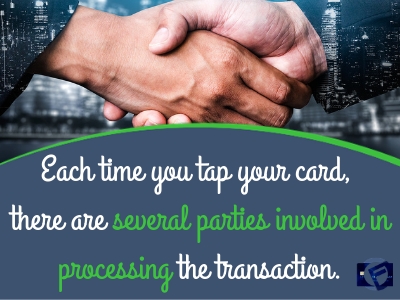
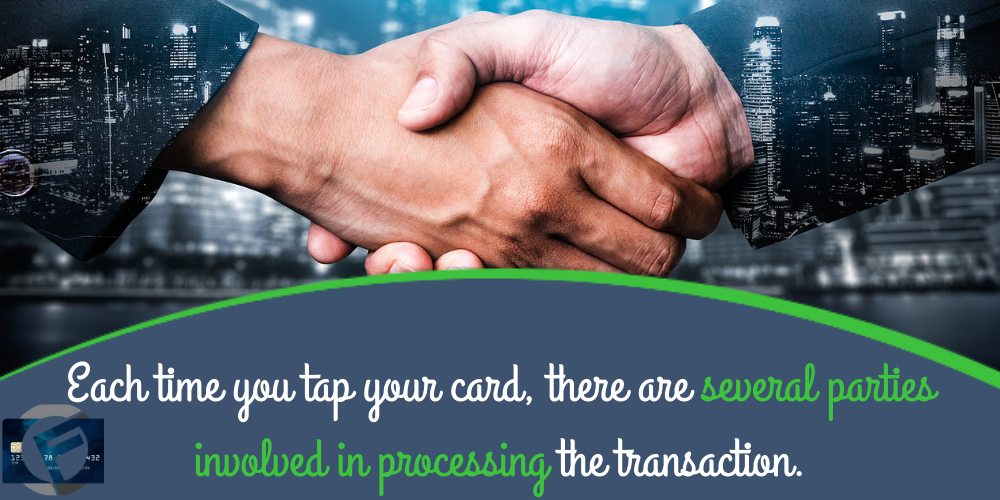
The Science Behind Credit Cards
Here’s the main hardware on your credit card.
The magnetic strip on the back of your card holds the information that is read by most ATMs or by card readers when you swipe your card. There are three tracks on the magnetic stripe and each has a different function. In the UK, normally only two of these are actually used. Essentially, these tracks contain your name, account number, the expiry date of your card, your card number, card limit and usage information about your card.
Before data chips came along, this magnetic strip was the only form of data storage on most cards. Modern cards with data chips also store data in the chip. If your magnetic strip is damaged or dirty, your card may be refused by devices which can only read the magnetic strip. Many ATMs in the UK can still only read data from the magnetic strip and you may be familiar with having a damaged card which you can use for contactless payment or chip and PIN, but does not work in an ATM. In order for a transaction to be carried out, the card reader needs to get all the necessary data from your card and if the magnetic strip is damaged it won’t be able to do so.
Did you know that it’s possible to erase the magnetic strip on your credit card by placing it too close to a magnet? Even small magnets can damage a card if they are put next to it for a long enough time. One way that cards can be damaged is by magnetic latches in purses or wallets. As well as making sure that the magnetic strip on your card isn’t scratched or rubbed, it’s also important to keep your card away from magnets as well.
Essentially, credit card chips store the same data as a magnetic strip, but just in a different format. They allow the card to be read by data chip readers. Information sent through these is generally more secure than information sent from a magnetic strip because it can be encrypted. Contactless payment is also sent from a data chip, through an antenna which is built into the card.
Data chips and contactless payment are recent innovations in credit card technology. However, there have been other innovations as well. In 2017, Mastercard released a credit card with an in-built fingerprint scanner to make payments as secure as possible.
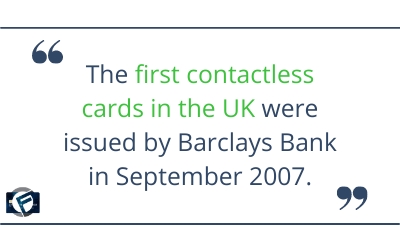

What does my Credit Card Number Mean?
The long number on your credit card is part of a numerical system that is constant around the globe. The first number in the sequence denotes the system, so most numbers either begin with 4 or 5. Visa accounts start with 4 and Mastercard accounts start with 5.
If you own a charge card (different to a credit card), you will see that the account numbers start with 3. These cards are usually either Diner’s Club or American Express. The rest of the long number denotes the bank account, your account and a double digits sequence that is a check.
The Technology which Confirms Transactions
When you make a transaction using your card, there are three methods of confirming that the card and account are valid for use. Purchases made in person are usually confirmed using hardware, such as a card reader. Stores which do not have many card transactions can use a smartphone with in-built software to confirm validity. However, most shops swipe the card through a reader, or have chip and PIN or contactless readers.
Online transactions are confirmed using complicated software, with encryption methods which ensure that information cannot be stolen as it is transferred. Despite the advances in online card security, there are scams and security problems out there and so it’s always wise to make sure you are safe when you shop online.
Credit Card Payment Scheme Providers
Globally, the two largest payment schemes for credit cards are provided by Visa and Mastercard. Of course, there are alternative providers, such as American Express. However, in the UK people tend to choose Visa or Mastercard because of their wide acceptance.
There is very little difference between card payment scheme providers, in terms of the role they perform and most people base their choice on how likely their card is to be accepted. That said, there can be differences in terms of security, as well as in offers and perks that they provide.
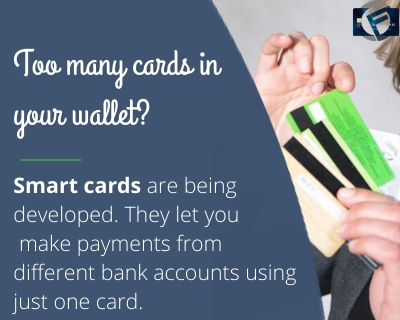
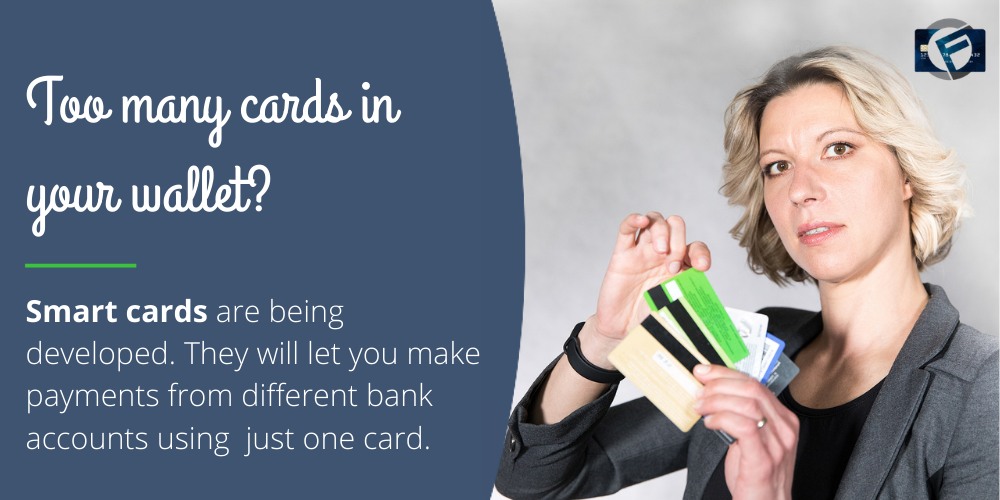
Credit Cards in the Future
Smart cards are the latest development in the world of plastic payment but are not yet in full circulation. They allow transactions to take place with different bank or credit card accounts using just one card. This type of card is intended to replace multiple cards so that people only need one card in their wallet. They work in a similar way to credit cards but have extra layers of cryptography that allow them to handle different accounts safely.
At the current time, smart cards are not freely available. However, both Mastercard and Visa are actively investing in this new technology, and they may soon be available to everyone. Some experts are concerned that having only one card could cause consumers problems especially if the card is lost or stolen. So, whether or not the general public will take to this new concept, we will just have to wait and see.
What’s Up Next?
In the next article, Cashfloat, a leading UK payday loan direct lender, will explore the less technical aspects of using a credit card. Next we’ll be looking at what financial advantages and disadvantages credit cards bring to people’s lives.



